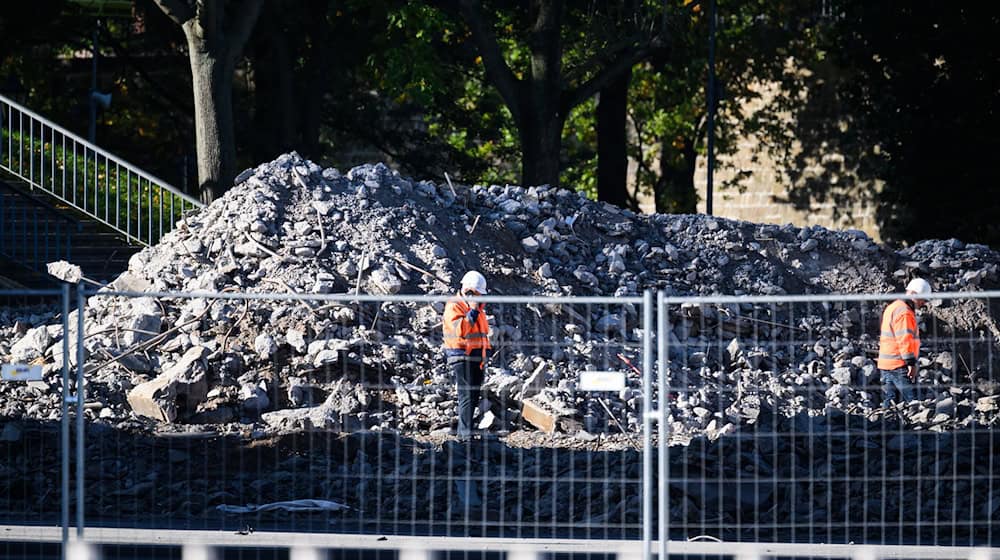The remains of the collapsed section of Dresden's Carola Bridge on the Old Town side have been demolished. "It's all down and is currently being processed," said Günter Wunderlich, site manager of the waste disposal company. The crushing of the rubble piled up on the bank will begin on Wednesday. "The mobile crushing plant has been delivered and is being set up." A total of around 3,500 tons of material has to be prepared for removal. "We're on schedule."
The Elbe crossing, which was built during the GDR era and opened in 1971, consisted of three lines. On the night of 11 September, for reasons that are still unclear, the western section C with the cycle path and streetcar system collapsed over a length of around 100 meters. No people were injured and the bridge has been completely closed ever since.
Separating steel and concrete before crushing
In the first few days after the collapse, the fire department and the Federal Agency for Technical Relief (THW) removed the remains of the destroyed bridge section that were in danger of collapsing with the help of the German Armed Forces and special technology in good time before the Elbe flooded.
According to Wunderlich, the steel is now removed from the concrete before the debris is crushed, and a magnetic belt in the crushing plant fishes out any remains. Since October 7, three long-arm excavators with cutting shears and hydraulic hammers have been gnawing away at the prestressed concrete meter by meter. By the end of next week, the large articulated section that has fallen into the Elbe will also be lifted and broken up using a mobile crane and the drop bed created to protect the bank reinforcement will be removed.
Up to 12,000 tons of rubble
At the end of October, demolition will then continue on the opposite bank on the Neustadt side. Another sloping leg of the route awaits there. The section that has fallen into the river must then be salvaged and disposed of.
According to the city's concept, strand C should be completely removed by the end of December. Wunderlich estimates that a total of 10,000 to 12,000 tons of material will ultimately be processed into recycled concrete for road construction. "The steel will be scrapped."
Copyright 2024, dpa (www.dpa.de). All rights reserved










